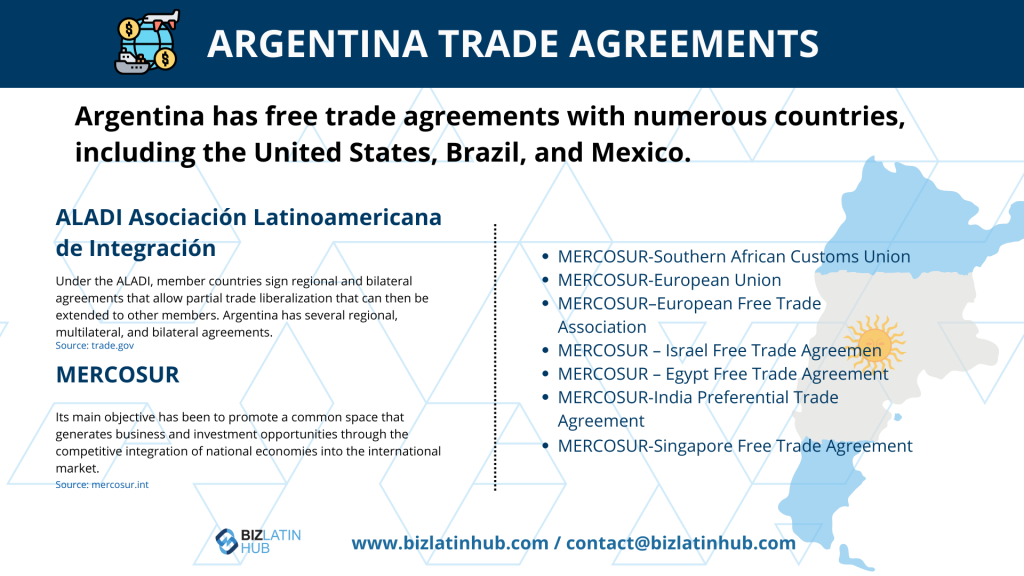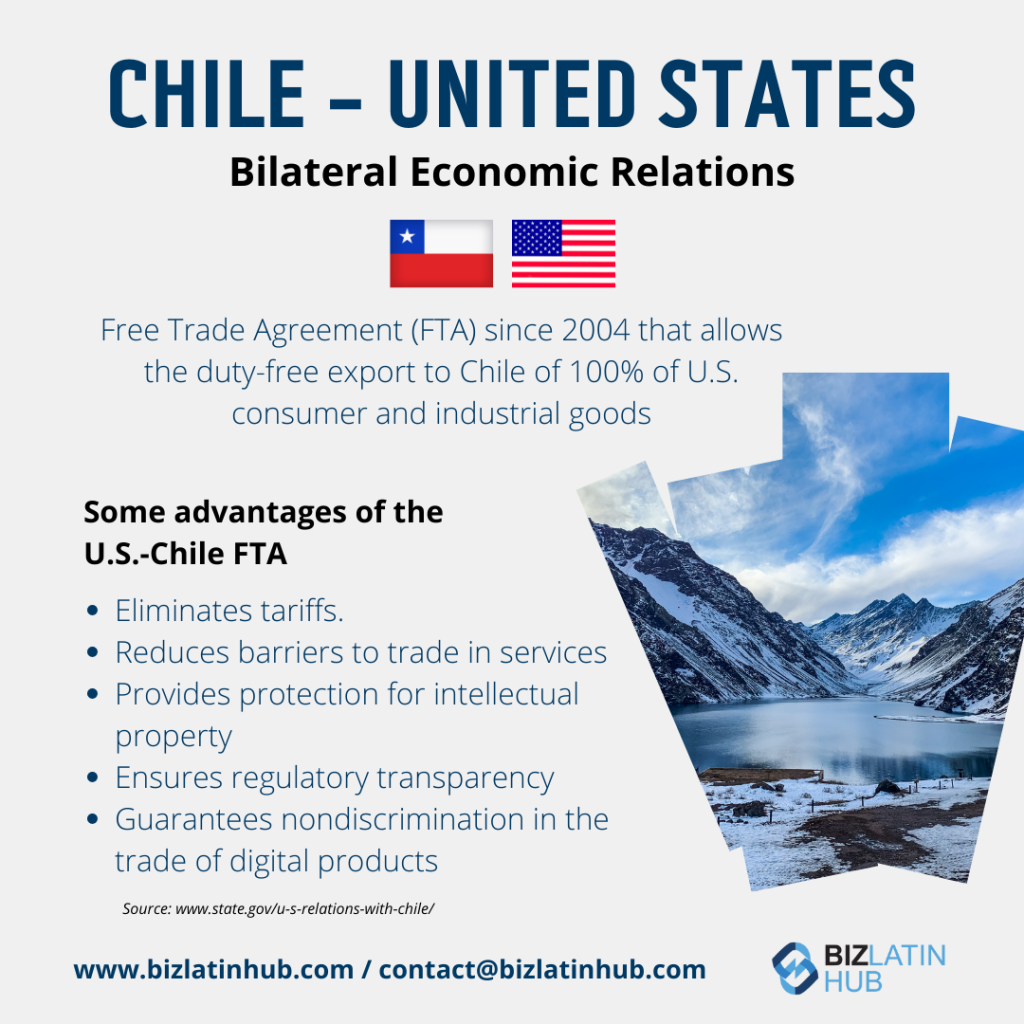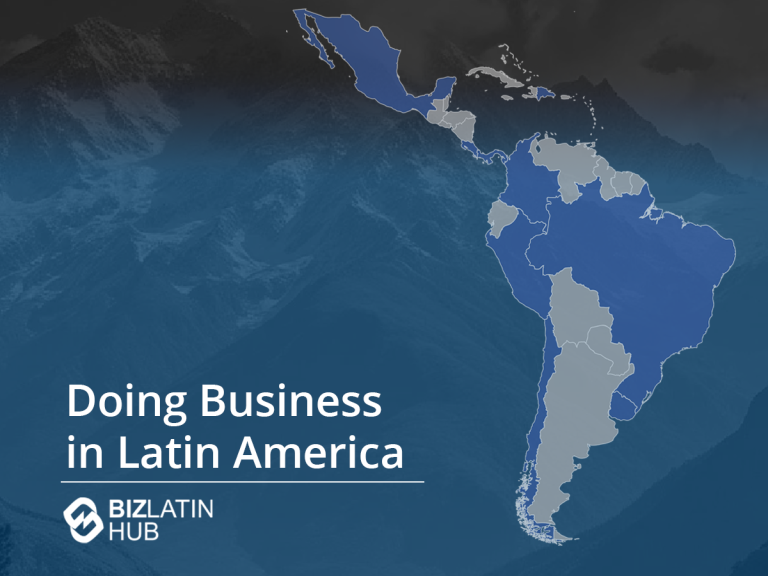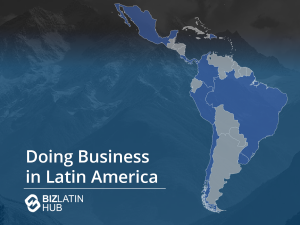As we enter the last quarter of 2024, we have decided to take a close look at major LATAM business opportunities. Which countries should you invest in? Which sectors have a promising future in 2025? We have decided to focus our analysis on 3 of the wealthiest economies in Latin America: Mexico, Argentina and Chile.
The region has continued to bounce back from the pandemic, and appears to have a bullish future going forwards. A growing number of international investors are looking at company formation in order to take advantage of LATAM business opportunities in 2025. However, there are some local differences in doing business you should be aware of before you consider expansion to the region.
At Biz Latin Hub, we know all about the idiosyncracies of doing business here as well as the most promising LATAM business opportunities on the horizon. Thaks to our network of 18 dedicated local offices across Latin America and the Caribbean, we’re able to support you anywhere with our array of back office services. With us in your corner, you can focus on what you do best: growing your business.
LATAM Business Opportunities: Mexico

Mexico is predicted to grow steadily in coming years. The fact it managed to rehabilitate itself quickly from the 2008 financial crisis shows its great potential and resistance to external crises.
With tensions between the USA and China, nearshoring and friendshoring in Mexico is providing a bounce back.
Mexico has a controlled inflation on the peso and a surprisingly low public deficit, which is a great sign of economic sustainability. The main future threat Mexico has to face is that of instability in the USA, as it is clear that both economies are interdependent.
However, with a bullish Wall Street, LATAM business opportunities abound in Mexico too. Americans are happy to invest in their southern neighbour, and even happier to see her sights.
Mexico’s tourism industry, a safe and prosperous industry:
The Mexican tourism industry is huge and is only predicted to grow more. This is due to a few factors that make it an extremely attractive destination. Let’s start with the fact that it holds 27 UNESCO World Heritage sites, placing it on the bucket list of destinations to visit for tourists around the world. Secondly, its geographic location is amazing, with both Atlantic and Pacific coasts.
It is a huge industry indeed, as it generated USD$15 billion just last year. This sector is sure to thrive in the post-COVID travel boom, with Yucatan becoming a hub for digital nomads. And the government is well aware of this, as huge amounts of money are being invested in improving tourist infrastructure.
And within these tourists, there are the medical tourists who travel for healthcare services in a country where it is relatively cheap to obtain medical care. With spiralling costs of clinical treatment across the border in the United States, this is a real growth industry.
There’s an unlimited amount of businesses you can invest in or set off in the Mexican tourism industry. Hotels, tours, guides, restaurants, transport and much more. A whole wealth of promising LATAM business opportunities for foreigners are in the Mexican tourism industry.
Argentina, Turning the Page on its Past?
One may question why Argentina is one of the biggest economies in Latin America and yet it’s presence in international trade and business is still quite poor. With a GDP of over USD$600 billion, Argentina’s economy is in reasonable health, after having been through a troubled past. Since the 2008 crisis which hit its economy hard, the government had adopted protectionist policies which excluded it from the global market.
Controversial economist and ardent supporter of free trade Javier Milei was elected at the end of 2023 and his time in charge of the country has been turbulent, to say the least. However, his policies of austerity have been met by broad approval from the World Bank, IMF and other transnational organizations.
With a heavy focus on cutting red tape, it is becoming easier to start new businesses in Argentina, and that’s what makes it a place with many of the LATAM business opportunities for 2025. From a relatively closed economy in the middle of last decade, Argentina has become much more open to foreign investment.

Argentina, a promising Green future:
In recent years, there has been a growing demand for energy. However, there has not been enough state money invested so private investors can freely invest in the energy sector. Renewable energy is a sector which has many opportunities since it needs foreign investment and expertise.
With its 3.8 million square kilometres of landmass, Argentina is the third largest reserve worldwide of shale oil and shale gas. Its territory offers huge opportunities in renewable energy sources. Law 27,191 was enacted in 2015, which included incentives for renewable energy going forward and has allowed more development already.
As such, the World Bank Board of Directors has approved a USD$480 million guarantee to promote private investment in the renewable energy sector. Seeing the growing demand for energy Argentina is facing, this sector is bound to grow substantially.
Chile, a Fast-growing Economy with Great Business Opportunities
Chile has been one of the fastest-growing economies in Latin America in recent decades. Since 1990, the economy has been growing at an average annual rate of 5%. Even more impressive, since 2010, the economy has been growing at a pace of 5.3% annually.
GDP took a hit at the end of the commodity ‘supercycle’, which has brought a few challenges to the Andean nation. Chile’s economy is very dependent on the extraction of minerals, as it is often referred as the ‘Copper economy’.
However, investors can bet on Chile given its strong and transparent financial system, its strong base in natural resources and its inevitable recovery in commodity prices going forward. A growing middle class is also establishing itself and driving internal demand.
Wine: set to become Chile’s new copper
Chile stands amongst one of the best wine producing countries in the world. The country has a 2700 kilometre border on the Pacific coast. In addition, Chile’s latitude goes from 17 to 56 degrees south which offers it a whole wealth of different climates.
The Andes offers Chile great soils and microclimates thanks to its high altitudes. These unique qualities have been praised by more and more local and foreign winemakers who consider it a paradise for growing vines.
Chile has been making wine for nearly 6 centuries now and their wines are known worldwide. Chile has caught the eye of various wine experts from Europe and the US. Although for a long time Chilean wines were known as affordable average quality wines, this has been changing fast with the arrival of expert winemakers setting up high-quality wineries.

We can mention the world famous Casa Lapostolle, French by origin, or the recent arrival of the two famous French winemakers of Château Lafite Rothschild (Los Vascos in Chile), or Château Mouton Rothschild who created Almaviva. These winemakers and specialists are attracting a lot of foreign interest and investment accordingly.
Chile shares more than 20 FTA’s (free trade agreements), which makes it even more interesting to invest in as a foreigner. Through these agreements, Chile freely exports its wines worldwide, which is one of the main reasons it is praised worldwide.
Chilean wines are everywhere in Mexico, and very often at a more affordable price than Mexican wines for tax reasons. Beyond all doubt, the Chilean wine industry is going to continue to grow at a great pace, and the business opportunities are flowing tremendously.
Explore LATAM business opportunities with Biz Latin Hub
Doing business in Latin America is often easier said than done. Latin America is an emerging region, which means that indeed, it has a lot of business opportunities. Nevertheless, a foreigner investing in Latin America often meets lots of difficulties when setting up, because the business environment is very unique, compared to in other parts of the world.
For example, it is difficult to know if you’re enacting within the law since it is very usual for these to change often. The same applies for tax paying – foreigners doing business in Latin America think they are paying the right amount of tax at the right time when actually they might not be.
Taking risks that do not comply with legal and accounting laws could be detrimental to your business. We would advise you to seek professional support when incorporating a business in Latin America because you will save time and money doing so.
Given the favorable conditions in the country and the region as well as the economic growth, Biz Latin Hub through its company offers the experience and support necessary for investors to have a successful market entry in Latina Amercia. Feel free to contact us now.
Watch this video to learn more about how we help our clients do business in Latin America:






